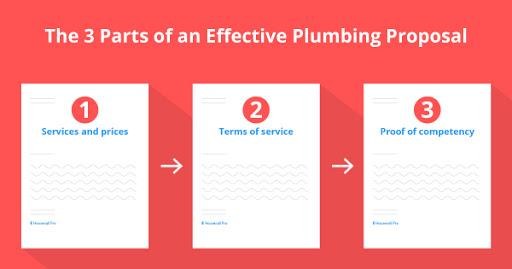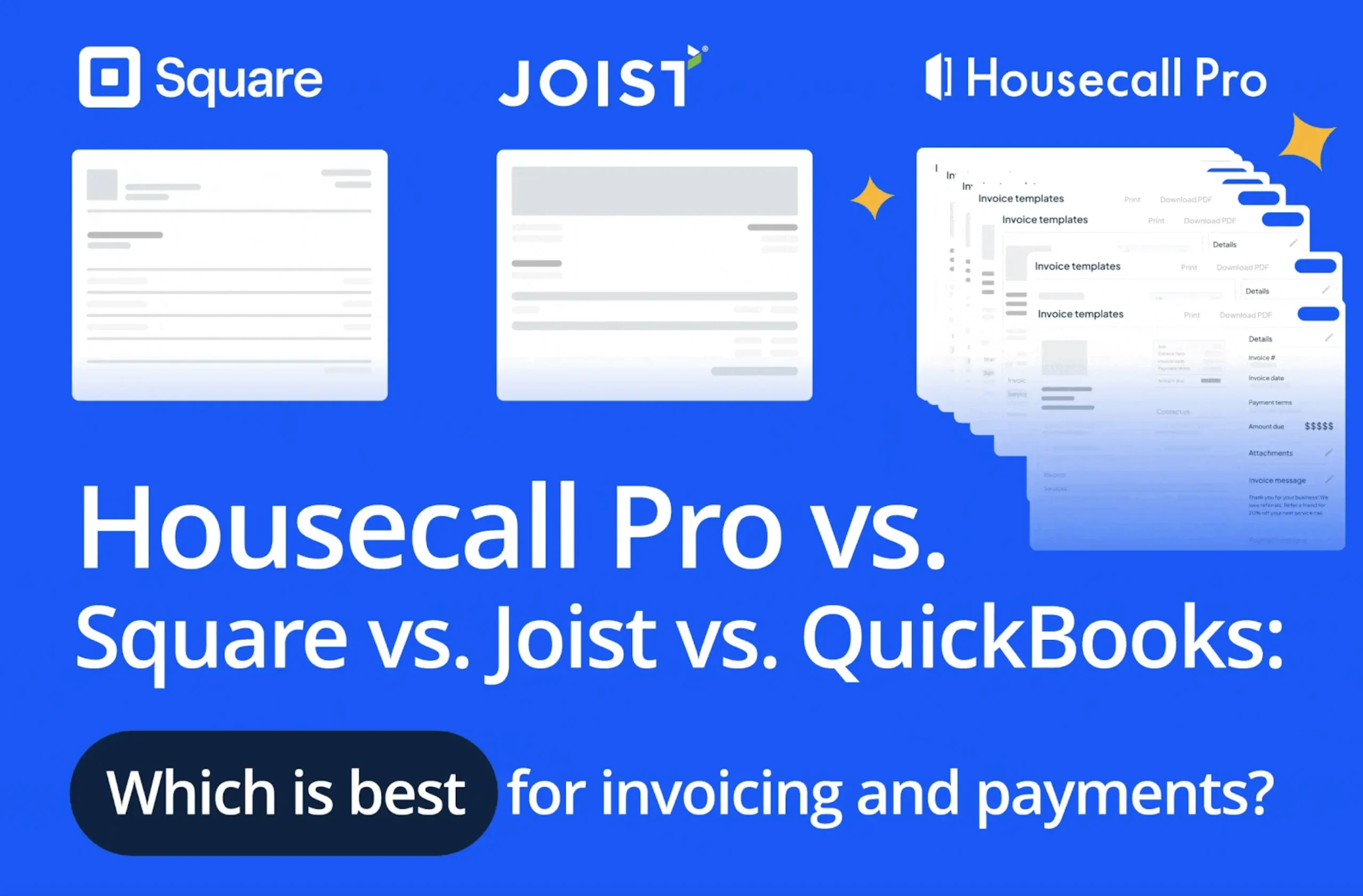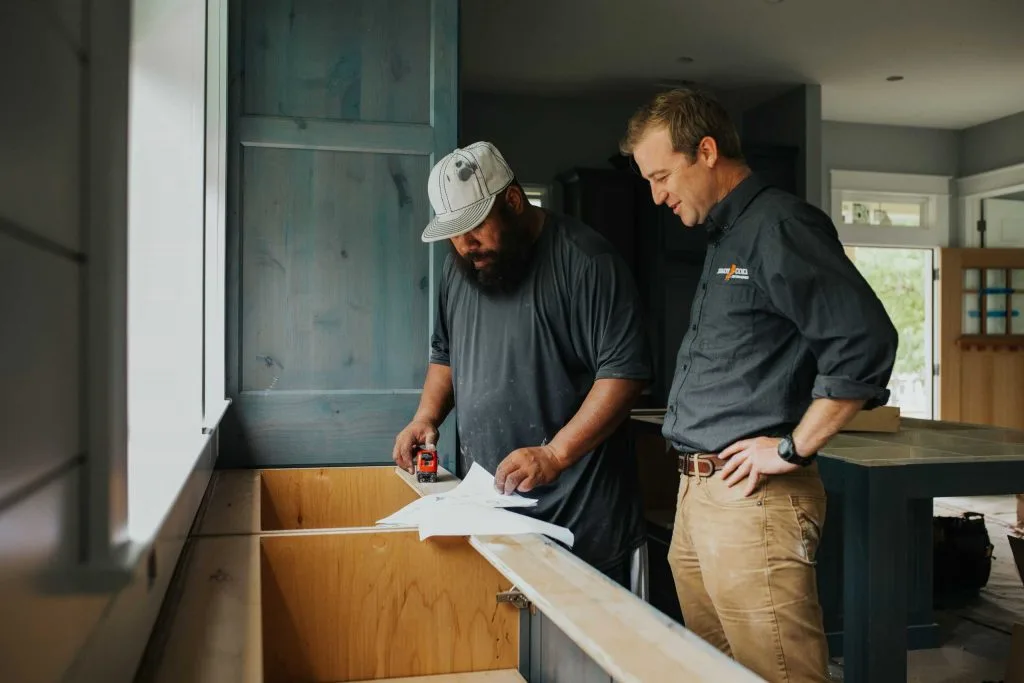
The Secrets to Creating a Plumbing Proposal That Doesn’t Suck (And Wins More Bids)
Plumbing proposals can be tricky to get right when you’re not using a streamlined solution like plumbing quote software.
On the one hand, you want to showcase your expertise and convince the customer that you’re the right person for the job. On the other hand, you want to keep it simple enough that they aren’t confused by a bunch of technical jargon about the work they’re trying to get done.
Add to that the pricing and value dance that come with every bid and you have a recipe for overthinking.
But what if you could create a simple, straightforward, and effective template for proposals that you could use every single time you’re bidding a job?
This could make life a whole lot easier.
For one, you’d have a template that works great and doesn’t need to be changed or built from scratch every time. Secondly, because having a template saves you time on creating and sending the quote, you could spend a bit more time dialing in the specifics for every bid and giving yourself the best chance to win the job.
In this guide, we’re going to walk through exactly how to create a winning plumbing proposal template that you can use over and over again. Once you have a template that works, you customize it quickly whenever you need to create and send a new bid. That’ll help you save time and land more gigs–it’s a winning proposal.
Let’s get into it.
Start with your Proposal Goals
Before you create a proposal template, you should start by defining what your goals are for each proposal that you send out.
Obviously, the main goal is to win more work. You want a proposal that converts into sales.
But, in order to accomplish that, you’ll need to achieve a few other goals with your proposal:
- Convince the customer that you understand their needs
- Present your bid in a clear and easy-to-understand way
- Showcase your ability to handle the work
- Make it as simple as possible for them to say yes
You want a proposal that’s feels like it was created and presented specifically for the person you’re sending it to. You also want the make the details clear and specific enough that there’s no confusion. And, you want to make it as easy as possible for your customer to sign and accept the agreement.
Put another way, your plumbing proposal should fit the 3 P’s:
- Personal
- Precise
- Pain-free
With these goals in mind, we can begin to think about what content should be included in the proposal itself. So let’s get into the specifics.
The 3 Parts of an Effective Plumbing Proposal
When it comes to the meat of a proposal you’re sending to a client, you want to make sure that you hit the 4 goals outlined above and hit the 3 P’s. That may seem a bit confusing, but when you really see it in practice, it’s not. All you really need to do is go one or two steps beyond the basic.
But you also don’t need to present a pile of paperwork for a simple repair job. Your goal shouldn’t be to bury the customer in legalese and excruciating detail.
When you boil it down, the actual substance of your proposal can be broken down into just 3 main sections:
- Services and prices
- Terms of service
- Proof of competency (Why the customer should choose to hire you)
Seems simple enough, right? It should be.
Of course, within each of these sections, there are some specific things that you’ll want to consider carefully. But the actual content, the flow, and the layout is quite straightforward.
So, let’s move onto hashing out each of the sections and turning this framework into an actual plumbing proposal template you can use.
Building Your Plumbing Proposal: A Step-by-Step Guide
At this point, we’ve talked a lot about the framework for building an effective proposal. We’ve covered the goals of the proposal and the content that should be included.
Now it’s time to bring the pieces together.
First of all, think about your proposal like a pyramid. You want to lead off by building an effective base of trust and mutual understanding about the problem that the customer wants you to help them solve. After that base is established, you can present the solution (along with the price). Lastly, you top it off with the “official” parts of the bid–the terms and agreement.
The truth is that your proposal for most jobs really only needs to be about 4-5 pages long.
It’s just enough to cover what’s important, without too much extra fluff.
Page 1-2: Give the Customer a Reason to Hire You (Build Trust)
The base of your pyramid represents the first 1-3 pages of your proposal template. This includes the cover of your proposal, a brief introduction or cover letter, and possibly one additional page that talks about your company and provides some kind of social proof.
This content may seem like it’s just there to fill space, but it’s vitally important to building initial trust with your customer in 2 distinct ways:
- Establishes industry knowledge and reputation
- Indicates that you understand their specific problem
These first few pages also give you an opportunity to build a personal connection with the customer.
One mistake that many plumbing companies make is that every part of their proposal is full of “boilerplate” text that feels generic and boring.
Instead, focus on the individual customer. Take some time to write at least 2-3 sentences that describe their unique situation and helps them feel comfortable knowing that you have taken the time to evaluate their needs.
You can use this intro section to highlight the specifics about your company and drive home your credentials. You might consider adding some quick social proof here to build confidence with the customer. Customer testimonials, online reviews, or industry recognition could add some legitimacy and help your chances of winning the work.
Next, you want to frame the proposal from the point of view of the customer.
- What is the problem they called you about?
- What did you learn when visiting and inspecting the situation?
- How do you plan to fix it?
Spell this out clearly in your cover letter or the introduction the proposal.
At this point, you’ve established your company as both trustworthy and reputable, as well as communicated to the customer that you understand their needs and have a plan for how to help them.
Make it short and to the point. Then move into the specifics of the proposal.
Page 3-4: Detail the Services and Prices
Here, you should outline the key services that you’re offering and their prices.
At the end of the day, this is what most customers are going to expect in the bid. They want a clear picture of what you’re going to do to fix the problem and how much it’s going to cost them.
It’s important to be specific and precise in your estimate. Are you offering multiple options for the same problem? Or are you itemizing multiple costs that are all part of the job?
How you itemize and price your bids is up to you. But, try to make sure that the scope of work and associated costs are as clear as possible for the customer.
You may want to include some brief descriptive text with each service listed in your proposal. As an added value, you could also explain how these services relate to their specific problem or need, in case that isn’t clear.
For instance, you could itemize the cost to “Replace Seat Washer x2” and then include a brief description that explains this is a necessary step in fixing the customer’s leaky faucet. This kind of descriptive content can be especially helpful if you are bidding for multiple repairs or services to be completed at once.
If necessary, you may also want to include a schedule for the services outlined.
Depending on the size of the job, it could take several days or weeks to complete. Make sure that the customers knows this in advance.
Page 5-6: Spell out the terms
Lastly, you need to outline the basic terms of the service you provide and provide a place for them to sign and accept the proposal.
Again, this doesn’t need to be an entire book of legal terms.
Having straightforward service terms makes it easy for the customer to understand what they’re getting—and that they aren’t going to get screwed over. Terms of service can be complicated. It’s a legal document, after all. But you can structure your terms with clear bullet points that make them simple to understand.
After that, you have a place for them to sign and accept your proposal.
That’s it.
With just 3-6 pages, you’ve put everything you need into an effective plumbing proposal template. Best of all, most of the components are plug-and-play, meaning that once you have a template established, you can keep using it for jobs into the future, making updates and adjustments as needed.
Build Your Own Plumbing Proposal Template in Minutes
Read to ditch your Microsoft Word proposal template?
Soon, we’ll be launching a free tool that will help you create and customize a proposal template for your plumbing business in just a few clicks. Get on the list to get access as soon as it’s available.






